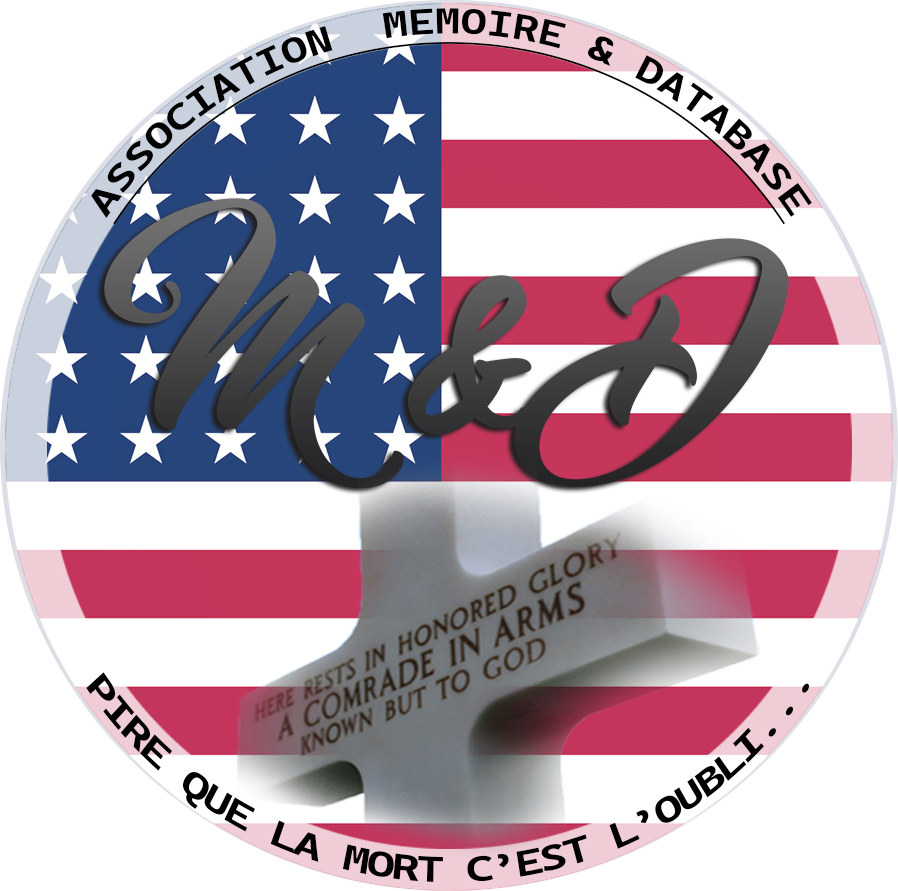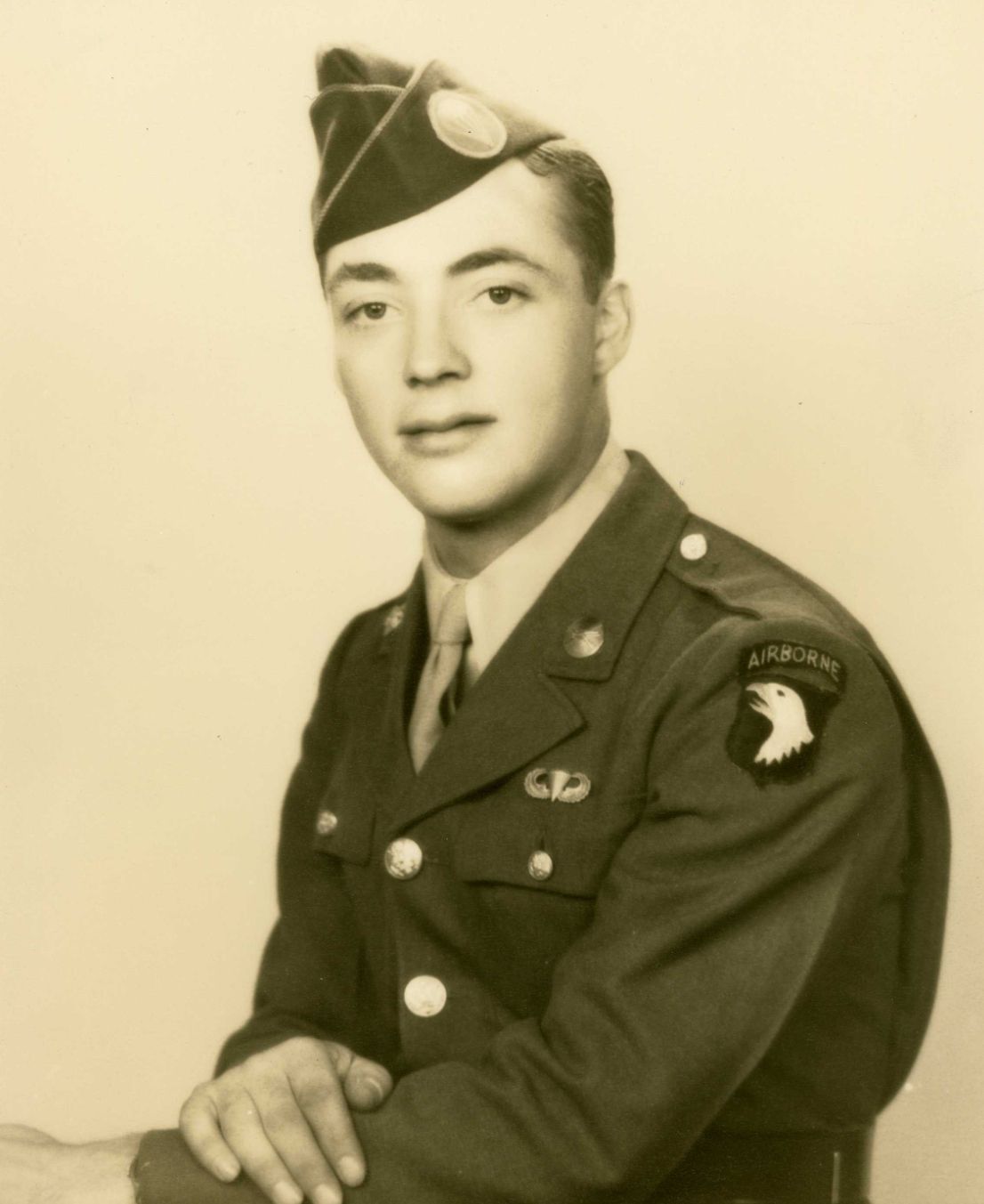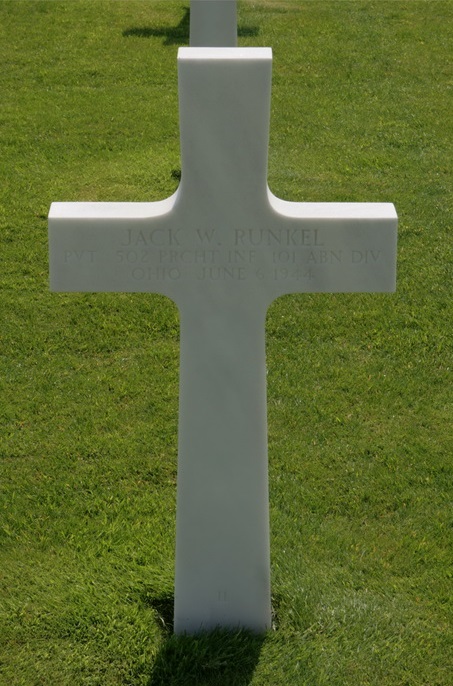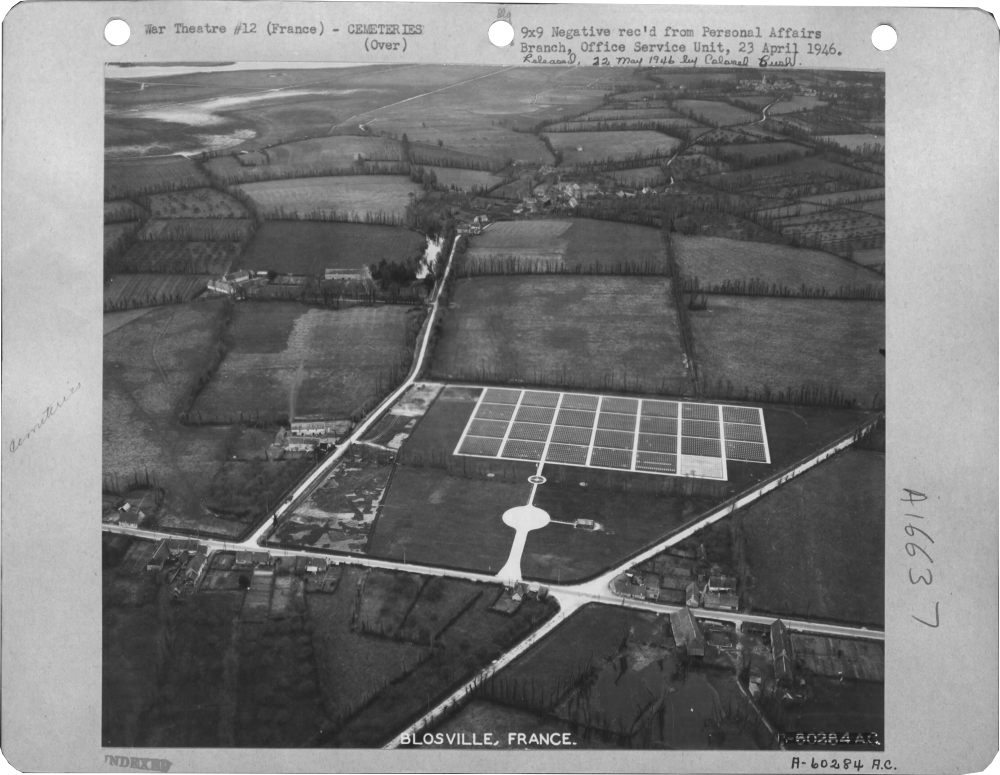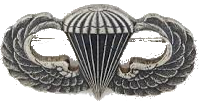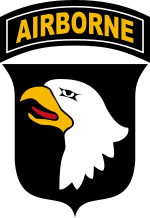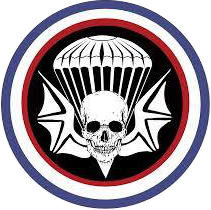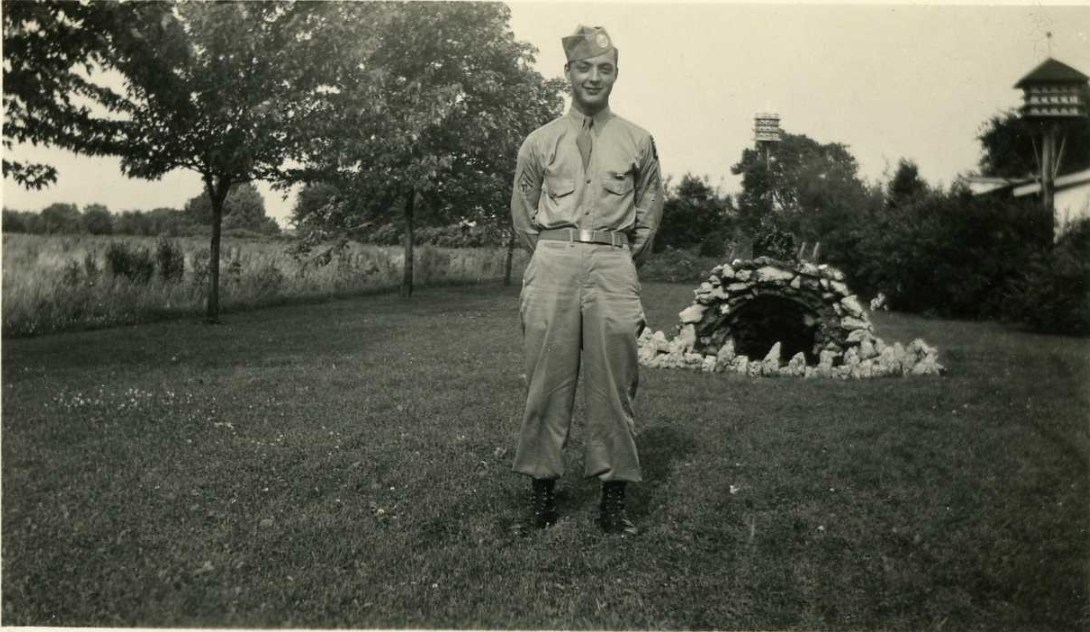|
Jack William RUNKEL
| ||||||||||||||||||||||||
|---|---|---|---|---|---|---|---|---|---|---|---|---|---|---|---|---|---|---|---|---|---|---|---|---|
|
Source : Hudson Louie
| ||||||||||||||||||||||||
| NUMBER OF SERVICE | 15098993 | |||||||||||||||||||||||
| AGE | 22 yo | |||||||||||||||||||||||
| DATE OF BIRTH | 21 October 1921 Toledo, Lucas County, OHIO | |||||||||||||||||||||||
| ENLISTMENT STATE | Country STATE | |||||||||||||||||||||||
| FAMILY |
Parents : Pearl & Jake RUNKEL Siblings : Guelda, Norma, Shirley, Lennis & Dick | |||||||||||||||||||||||
| RANK | Private | |||||||||||||||||||||||
| FONCTION | Paratroopers | |||||||||||||||||||||||
| JOB BEFORE ENLISTEMENT | Salespersons | 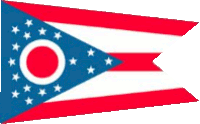 | ||||||||||||||||||||||
| DATE of ENLISTEMENT | 6 February 1942 Fort Benjamin Harrison INDIANA | |||||||||||||||||||||||
| COMPANY | Company B | |||||||||||||||||||||||
| REGIMENT | 502nd Parachute Infantry Regiment | |||||||||||||||||||||||
| DIVISION | 101st Airborne Division | |||||||||||||||||||||||
| DATE OF DEATH | 6 June 1944 |
Source : Dominique Potier | ||||||||||||||||||||||
| STATUS | KIA | |||||||||||||||||||||||
| PLACE OF DEATH | Saint-Martin-de-Varreville | |||||||||||||||||||||||
| CEMETERY TEMPORARY |
CEMTERY TEMPORARY of -- N°--
| |||||||||||||||||||||||
| CEMETERY | NORMANDY AMERICAN CEMETERY of Colleville | |||||||||||||||||||||||
| GRAVE |
| |||||||||||||||||||||||
| DECORATION |
| |||||||||||||||||||||||
| ||||||||||||||||||||||||
| STORY | ||||||||||||||||||||||||
In AmericaOn February 6, 1942, Jack Runkel enlisted into the U.S. Army, officially becoming Private Runkel. He was first stationed at Fort Benjamin Harrison, located near the northeastern outskirts of Indianapolis, Indiana. Here, he likely completed basic training until he was sent to Fort Benning, Georgia. At Fort Benning, Runkel joined with the rest of Baker company of the 502nd Parachute Infantry Battalion just one month before it became the 502nd Parachute Infantry Regiment. He trained here briefly before he was sent to Fort Bragg, North Carolina. While stationed at Fort Bragg, the 502nd Parachute Infantry Regiment united with other regiments, and the 101st Airborne Division was officially declared a part of the U.S. Army for the first time since World War I on August 15, 1942. Runkel probably participated in numerous practice parachute landings at Fort Bragg. On September 4, 1943, Runkel boarded the SS Strathnaver, embarking toward a world unimaginably far away from home. This was his final day on U.S. soil. | ||||||||||||||||||||||||
Preparing for D-DayWhile in England, Runkel and the rest of his regiment stayed in two neighboring villages near the city of Berkshire. Combat exercises were rigorous. This was Runkel’s location for about seven months. |
RUNKEL Jack W - 1942
Source : usafdo
| |||||||||||||||||||||||
Operation OverlordThe 502nd Parachute Infantry Regiment had two main objectives, both of which were inland from Utah Beach. One was to secure two causeways for the 4th Infantry Division to have a path away from the beach; the second was to destroy an artillery battery near Ste. Martin-de-Varreville that posed a huge threat to the Allied seaborne landings. For the purposes of the operation, the 502nd Parachute Infantry Regiment was divided into three battalions. All three battalions were supposed to drop at Drop Zone A, just inland from the beach and near the village of St. Martin-de-Varreville; however, none of the paratrooper drops were simultaneously precise and accurate. After reorganizing from scattered drop, the regiment accomplished their missions. Unfortunately, Runkel did not survive long enough to see this happen. He was killed in action on D-Day, June 6, 1944. | ||||||||||||||||||||||||
Activated/Activé |
Normandy/Normandie |
| 15 Aug 1942 | Days of Combat/Jour de Combat 214 |
| Casualties/Victimes 9 328 | |
Entered Combat/Entré au combat |
|
| 6 Jun1944 D-Day | |
|
Commanding Generals/Commandants généraux Maj. Gen. William C. Lee (Aug 42 - Mar 44) |
Campaigns/CampagnesNormandy (6 Jun 44 - 24 Jul 44) Rhineland (15 Sep 44 - 21 Mar 45)
|
PLAN DE ROUTE DE LA CAMPAGNE - CAMPAIGN ROUTE MAP |
|
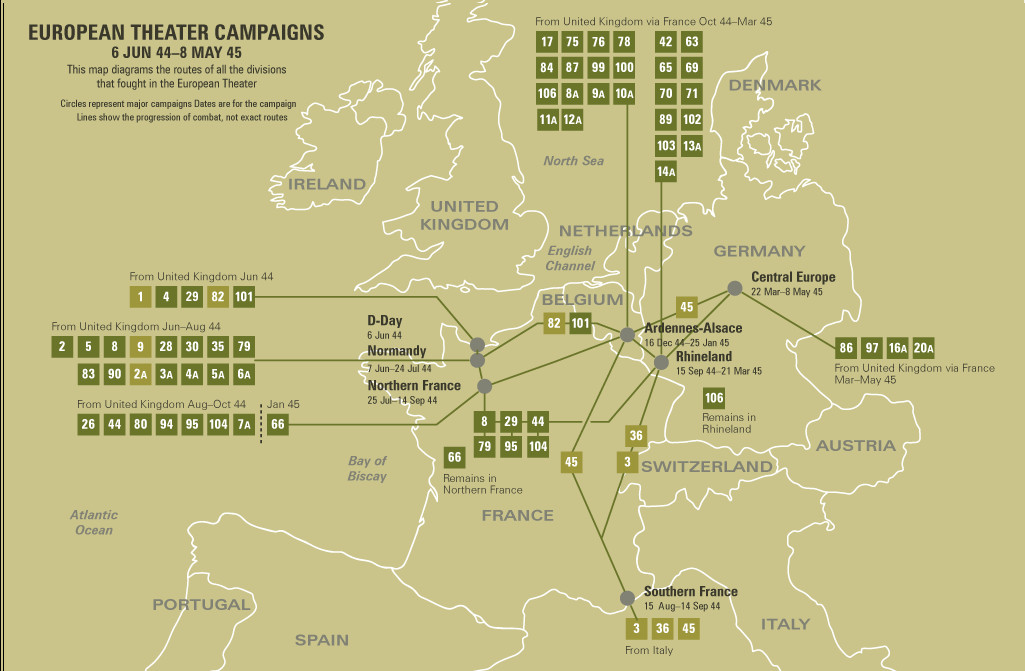 |
|
DIVISION CHRONICLEThe 101st Airborne arrived in England, 15 September 1943, and received additional training in Berkshire and Wiltshire. On 6 June 1944, the Division was dropped into Normandy behind Utah Beach. Against fierce resistance it took Pouppeville, Vierville, and St. Come du Mont. On the 12th, the stronghold of Carentan fell, and after mopping up and maintaining its positions, the Division returned to England, 13 July, for rest and training. On 17 September 1944, taking part in one of the largest of airborne invasions, the 101st landed in Holland, took Vechel and held the Zon bridge. St. Oedenrode and Eindhoven fell after sharp fighting on the 17th and 18th. Opheusden changed hands in a shifting struggle, but the enemy was finally forced to withdraw, 9 October. After extensive patrols, the Division returned to France, 28 November, for further training. On 18 December, it moved to Belgium to stop the German breakthrough. Moving into Bastogne under the acting command of Brig. Gen. Anthony C. McAuliffe, it set up a circular defense and although completely surrounded, refused to surrender on 22 December. Its perimeter held against violent attacks. The 4th Armored Division finally reached the 101st on the 26th and the enemy offensive was blunted. Very heavy fighting continued near Bastogne for the rest of December and January. On 17 January 1945, the Division moved to Drulingen and Pfaffenhoffen in Alsace and engaged in defensive harassing patrols along the Moder River. On 31 January, it crossed the Moder in a three-company raid. After assembling at Mourmelon, France, 26 February 1945, for training, it moved to the Ruhr pocket, 31 March, patrolling and raiding in April and engaging in military government at Rheydt and Munchen-Gladbach. The 101st reached Berchtesgaden by the end of the war and performed occupational duties until inactivation in Germany. |
CHRONIQUE DE DIVISIONLe 101st Airborne est arrivé en Angleterre, le 15 septembre 1943, et a reçu une formation supplémentaire dans le Berkshire et le Wiltshire. Le 6 juin 1944, la division est larguée en Normandie derrière Utah Beach. Contre une résistance féroce, il fallut Pouppeville, Vierville et St. Come du Mont. Le 12, le fief de Carentan est tombé, et après avoir nettoyé et maintenu ses positions, la Division est revenue en Angleterre, le 13 juillet, pour se reposer et s'entraîner. Le 17 septembre 1944, participant à l'une des plus grandes invasions aéroportées, la 101st débarque en Hollande, prend Vechel et tient le pont de Zon. St. Oedenrode et Eindhoven sont tombés après des combats acharnés les 17 et 18. Opheusden a changé de mains dans une lutte changeante, mais l'ennemi a finalement été forcé de se retirer, le 9 octobre. Après de longues patrouilles, la Division revint en France le 28 novembre pour suivre une formation complémentaire. Le 18 décembre, il a déménagé en Belgique pour arrêter la percée allemande. Déménagement à Bastogne sous le commandement de Brig. Général Anthony C. McAuliffe, il a mis en place une défense circulaire et bien que complètement encerclé, a refusé de se rendre le 22 décembre. Son périmètre tenu contre les attaques violentes. La 4e division blindée atteignit finalement la 101e le 26 et l'offensive ennemie fut émoussée. De très violents combats ont continué près de Bastogne pour le reste de décembre et janvier. Le 17 janvier 1945, la division s'est déplacée à Drulingen et à Pfaffenhoffen en Alsace et s'est livrée à des patrouilles de harcèlement défensif le long de la rivière Moder. Le 31 janvier, il a traversé le Moder dans un raid de trois compagnies. Après s'être rassemblé à Mourmelon, France, le 26 février 1945, pour s'entraîner, il s'installa dans la poche de la Ruhr, le 31 mars, patrouillant et faisant des raids en avril et s'engageant dans un gouvernement militaire à Rheydt et Munchen-Gladbach. La 101e a atteint Berchtesgaden à la fin de la guerre et a exercé des fonctions professionnelles jusqu'à l'inactivation en Allemagne. |
| SOURCE INFORMATION & PHOTO | Armydivs.squarespace.com |
|---|
A City at War |
|
Toledo, Ohio: America Loves its Jeep!Following the attack on Pearl Harbor, the city of Toledo, Ohio transformed into a total war industry hub. Most of all, the city would make its contribution to freedom by being the largest producer of U.S. Army 4x4 Utility Trucks, a vehicle General Eisenhower referred to as, “indispensable to the war effort.” Industry and Victory Loan BondsToledo produced a plethora of materials other than Jeeps during the war. Some of the city’s other industrial outputs included ships, ammunition, airplane propellers, and smoke-screen foggers. On June 1, 1945, the War Production Board announced that since December 1941, Toledo's war output totaled $3,090,505,000. Source : Nhdsilentheroes.org |
Eulogy |
|
The cross that stands over Private Runkel’s grave serves as a reminder of how young men, like Private Runkel, did not cower in the face of adversity, but instead, actively assumed duty during total world war, risking and giving their lives as a result. The 502nd Parachute Infantry Regiment’s mission of securing two causeways and destroying a German artillery battery were accomplished days after his death. What is so inspiring about Private Runkel’s story is not what he did or did not accomplish on the battlefield; it is that he had the courage to risk his life for a just cause despite everything he had already endured. Stories like his with no illustrious outward appearance are much more than they seem. Heroes like Private Runkel who embraced their duty even after unspeakable tragedy deserve to be honored and remembered for their extraordinary contributions to the fight for world freedom. These heroes were not simply serial numbers; they were human beings with their own families, interests, talents, and, most of all, stories. Private Runkel’s story is one that I will never forget, and with deepest sincerity, I say, Private Jack William Runkel, thank you for your service and for your sacrifice. |
| SOURCE INFORMATION & SOURCE PHOTO | ww2-airborne.us - Findagrave.com - Abmc.gov - Nhdsilentheroes.org |
|---|---|
| PROGRAMMER | Henri, Garrett, Clive, Frédéric & Renaud |


